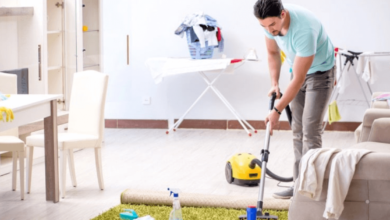How to Check Luggage and Clothing for Bed Bug Symptoms

Bed bugs are tiny, elusive pests that can cause significant distress. They’re especially notorious for hitching rides in luggage and clothing, making travelers vulnerable to infestations. If you’ve recently stayed in a hotel, used public transport, or visited a densely populated area, it’s important to inspect your belongings for any signs of these pests. Understanding bed bug symptoms is the first step in preventing a full-blown infestation in your home.
This article will guide you through the process of checking your luggage and clothing for bed bug symptoms, what signs to look for, and how to prevent them from spreading.
Why It’s Important to Check for Bed Bug Symptoms
Bed bugs are not only a nuisance but also difficult to eliminate once they infest your home. They can go unnoticed for long periods, feeding on human blood and hiding in cracks, seams, and fabrics. Identifying bed bug symptoms early can help you take immediate action and avoid costly extermination services or replacement of infested items.
Common Bed Bug Symptoms to Watch For
Before diving into how to check your belongings, it’s crucial to understand what bed bug symptoms ( væggelus symptomer ) look like. Here are the most common signs:
1. Rust-Colored Stains
Bed bugs leave behind small rust-colored or reddish-brown stains from their excrement or crushed bodies. These are often found on fabrics and are a strong indicator of their presence.
2. Small Dark Spots
Tiny black or brown dots, about the size of a pen tip, could be bed bug feces. These stains often bleed into fabric like a marker would.
3. Shed Skins and Eggshells
As they grow, bed bugs shed their outer skins. These pale, translucent shells can be found near seams or folds of clothing or luggage linings. Eggs and eggshells, which are white and about 1 mm in size, may also be visible.
4. Live Bugs
Of course, spotting live bugs is the most obvious sign. Adult bed bugs are small, oval, and brownish-red, about the size of an apple seed. They’re often found in hidden corners or dark crevices.
5. Unexplained Itchy Bites
While this isn’t a sign found on clothing or luggage, unexplained itchy, red bites on your skin—especially in a line or cluster—are often one of the first bed bug symptoms people notice.
See also: The Function Of Personalized Web Design In Increasing Online Credibility
How to Check Luggage for Bed Bug Symptoms
When returning from a trip, inspect your suitcase carefully before bringing it into your home. Here’s how to do it properly:
Step 1: Inspect the Exterior
Start by checking the outside of your luggage, including the handles, zippers, wheels, and seams. Use a flashlight to illuminate dark areas. Look for any of the bed bug symptoms mentioned above, especially dark spots, stains, or shed skins.
Step 2: Check Pockets and Linings
Open every zipper and pocket. Pay close attention to the seams and corners of the interior lining, as bed bugs often hide in tight, concealed areas. Remove all contents from the suitcase and examine them under bright lighting.
Step 3: Use a Lint Roller or Vacuum
Even if you don’t see obvious symptoms, it’s wise to use a lint roller or a vacuum with a crevice tool to remove any potential bugs or eggs. Dispose of the vacuum bag or lint roller sheet immediately in an outdoor trash bin.
Step 4: Store Suitcase Safely
Until you’re confident your suitcase is clear, store it in an isolated area like the garage or a sealed plastic bag. Avoid placing it on beds, couches, or carpets where bed bugs could spread.
How to Check Clothing for Bed Bug Symptoms
Bed bugs can cling to clothes, especially if they’ve been sitting on or near infested furniture or bedding. Here’s how to check and clean your clothes properly:
Step 1: Sort Your Clothes
Separate clothes into categories: worn vs. unworn, clean vs. dirty. Even unworn clothes can carry bed bug symptoms ( væggelus symptomer ), so don’t skip inspecting them.
Step 2: Shake and Inspect
Shake each piece of clothing thoroughly over a bathtub or light-colored surface to dislodge any hidden bugs. Then inspect seams, folds, and pockets closely for any visible signs.
Step 3: Wash and Dry Immediately
Place all clothing items—regardless of whether you see symptoms—into the washing machine on a hot water cycle. Heat is one of the most effective ways to kill bed bugs. After washing, dry clothes on the highest heat setting for at least 30 minutes.
Step 4: Bag and Isolate
Place laundered clothes in clean, sealed plastic bags until you’re certain your home is bed bug-free. This prevents reinfestation from possibly infected items.
Preventing Bed Bugs While Traveling
Being proactive is the best way to avoid bringing bed bugs home. Here are a few prevention tips for travelers:
- Inspect Hotel Rooms: Before unpacking, check the mattress seams, headboards, and nightstands for bed bug symptoms.
- Use Hard-Sided Luggage: Soft luggage provides more hiding spots for bed bugs.
- Avoid Placing Bags on Beds or Carpets: Use luggage racks or hard surfaces instead.
- Pack in Plastic Bags: Place clothes in sealed plastic bags within your suitcase to reduce risk.
- Travel with a Flashlight: This helps with quick inspections in low light environments.
What to Do If You Find Bed Bug Symptoms
If you detect bed bug symptoms on your clothing or luggage, act quickly:
- Isolate Affected Items: Keep them sealed in plastic until they can be cleaned.
- Clean Thoroughly: Wash clothes on high heat and vacuum luggage and surrounding areas.
- Monitor for More Signs: Use bed bug interceptors or traps to monitor your home for any hidden infestations.
- Consult a Professional: If symptoms persist, call a licensed pest control expert to assess and treat the problem.
Conclusion
Recognizing and responding to bed bug symptoms on your luggage and clothing is essential for keeping your home pest-free. Bed bugs are sneaky travelers that rely on our ignorance to spread. By learning what to look for and how to inspect your belongings, you can stop an infestation before it starts. With careful travel habits and routine checks, you’ll reduce the risk of bringing these unwelcome guests home with you.




